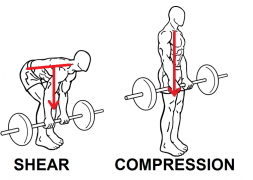We changed up the format a bit for this episode and spent the whole time just talking about one lift. We could make an argument that the best lift is the deadlift for rowing. The deadlift has a ton of carryover to rowing, for performance, reinforcing technical cues and coaching, and long-term back health. In this 55-minute episode, we give some backstory on the deadlift, why it’s such a great lift for rowing, our progression for teaching it to new lifters, variations on the deadlift that we use in our training, and of course, how to actually train it with sets, reps, and intensities for in-season and off-season.
Hear it also on Soundcloud and iTunes
0:00 — Brief update and news from our coaching and learning
3:15 — Overview of the deadlift for rowing
- The many faces of the deadlift in strongman
- Blake: Deadlifting for Rowers
- Will: “Taking the Slack Out of the Bar”
- Will: Backstory from my deadlift training – “Don’t Deadlift Like This Man”
- Note the lack of torso tightness, shrugged shoulders at start, rounded over spine, and “shooting the slide” as the first motion.
- Joe: “Proximal stability for distal athleticism”
16:25 — Teaching progression for the deadlift for rowing

- Joe: How to Hip Hinge
- Joe: How to Kettlebell Deadlift
- Will: How to Train Your Rower: Deadlift
- Will: The Best Deadlift for Rowing
- Will: What I Learned from Motor Learning
25:21 — The Great Bracing Debate
- Discussion on Masters Rowing International Facebook Group (join us!)
- Abdominal Hollowing vs. 360-degree Bracing
- Read for yourself in “Ultimate Back Fitness & Performance, Fifth Edition” by Dr. Stuart McGill (page 76-77)
- Stu McGill: “Comparison of Different Strongman Events: Trunk Muscle Activation and Lumbar Spine Motion, Load, and Stiffness”
34:10 — Variations of the deadlift for rowing
- Will: Romanian Deadlift (RDL)
- Will: Block/Rack Pull (Elevated Deadlift)
- Will: Trap Bar Deadlift
- Joe: Single-Leg Deadlift (SLDL)
39:37 — Training the deadlift for rowing, in-season and off-season
- Will: Overview of Block Periodization System
- Will: Peak Power Training For Rowing
- Will: Explosive Power for Rowing (explosive *intent*)
- Will: “FAQs for Deadlifting for Rowing“
- 47:05 — Using lower reps compared to higher reps, how and why
50:40 — Final notes on the deadlift
- “Strength reserve is the difference between maximum strength and the strength required to perform a skill under competitive conditions. For example, one study using strength-gauged techniques measured rowers’ mean force per stroke during a race, which was 123 pounds (Bompa, Hebbelinck, and Van Gheluwe 1978). The same subjects were found to have absolute strength in power clean lifts of 198 pounds. Subtracting the mean strength per race (123 pounds) from absolute strength (198 pounds) indicates a strength reserve of 75 pounds. In other words, the ratio of mean strength to absolute strength is about 1 to 1.6. Other subjects in the same study were found to have a higher strength reserve and a ratio of 1 to 1.85. Needless to say, these subjects performed better in rowing races, which supports the conclusion that an athlete with a higher strength reserve is capable of performing at a higher level. Therefore, a strength and conditioning coach should aim to help athletes reach the highest possible level of maximum strength during the weekly time devoted to strength training in a rational ratio with more sport-specific sessions, in order to prevent a negative transfer”.
- Bompa T., Hebbelinck, M. and Van Gheluwe, B. 1978. A biomechanical analysis of the rowing stroke employing two different oar grips. The XXI World Congress in Sports Medicine, Brasilia, Brazil.
- Will: FAQs on deadlifting for rowing
- “There is no reason to be alive if you can’t do deadlift!”
Thanks for listening! If you have a question or comment, please leave it below and we’ll respond. Until our next episode, you can listen to all of our old ones here in the Rowperfect UK archives.
No related episodes.


2 responses
I would urge you to redraw the SHEAR figure in the inset. If someone takes this lift positioning literally, the chances of lower back strain or potential for perminent damage will be considerable. Use the picture to model the drawing. That back angle is spot on….angled back, low butt. This will also position the lower leg in an advantageous position, a bit more like moving the seat up the slide. And no appreciable pull with the arms when using considerable weight. Very important.
Hi ScaicS,
Thanks for the comment. That image actually belongs to SAPTStrength.com and should be taken just as an illustration of what shear force is versus compressive force. It is not a recommendation for how to perform the lift. We talk at length in the episode about the value of reducing shear force when deadlifting, I think you’d enjoy that discussion.